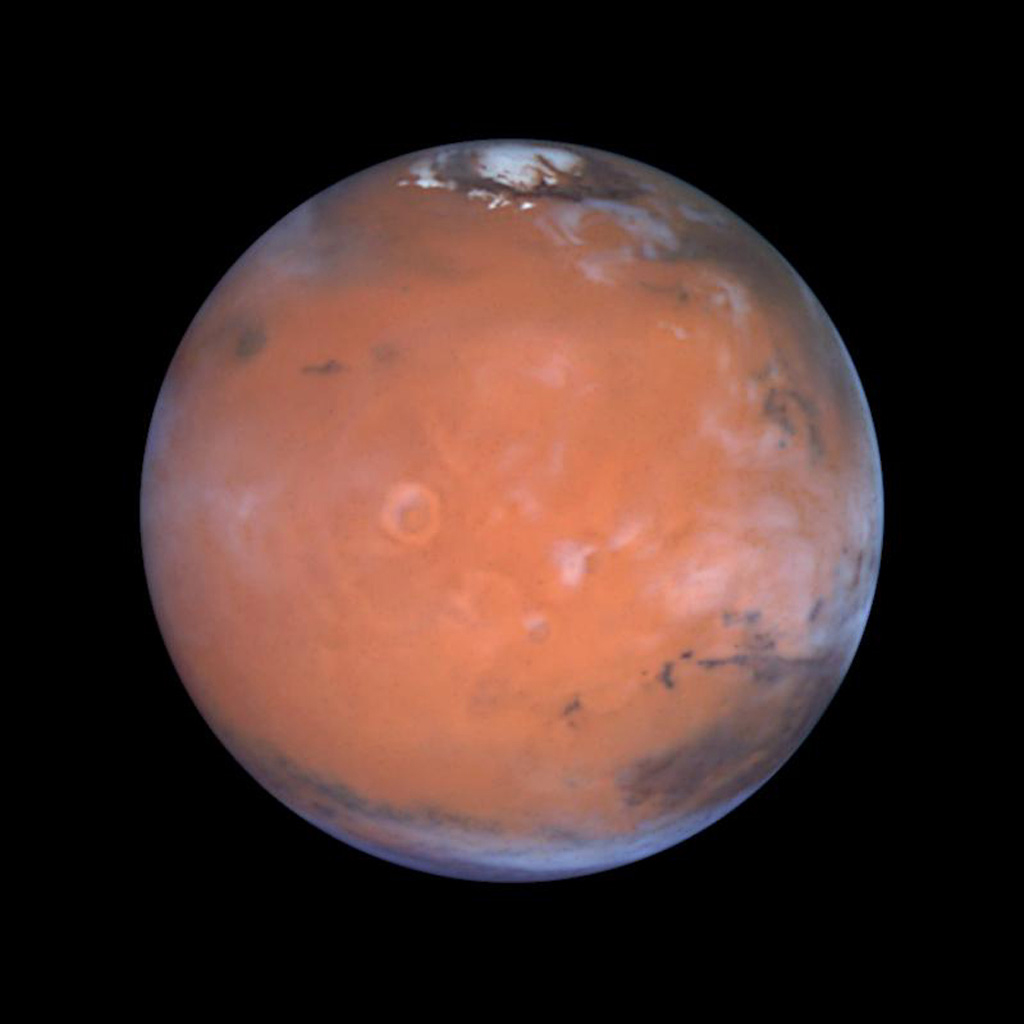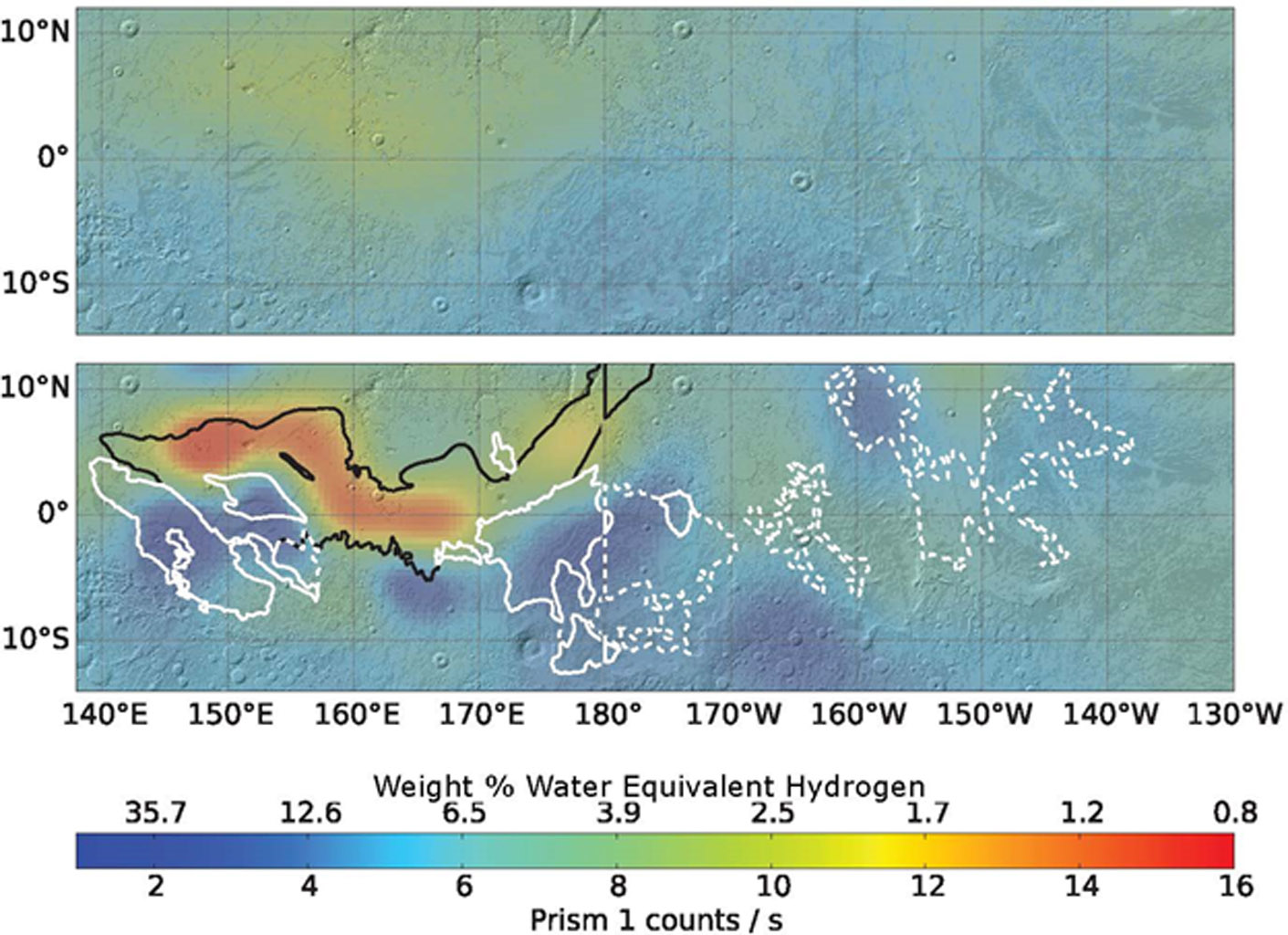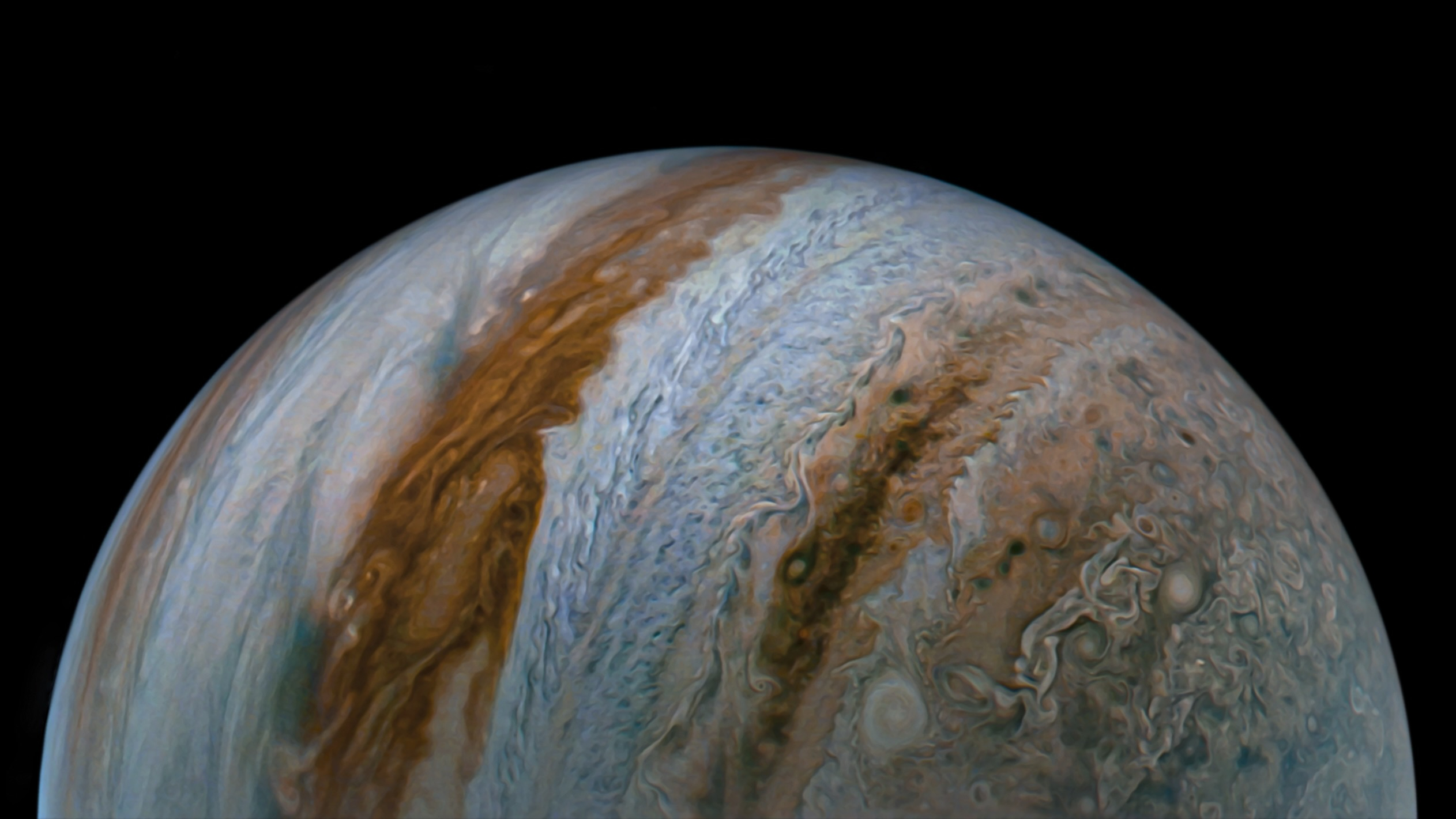Water Ice Mystery Found at Martian Equator

A new examination of old data suggests that there might be ice hiding in the Martian equator, even though scientists previously thought that the substance couldn't exist there.
Scientists uncovered an unexpected amount of hydrogen when looking at older data from NASA's Mars Odyssey spacecraft dating back to between 2002 and 2009. At higher latitudes, hydrogen generally indicates buried water ice, but this was not believed possible at the equator, according to a statement from NASA.
If there is indeed water there, this would help with a future human mission to Mars, because it could mean the astronauts wouldn't need to bring the substance with them for drinking, cooling equipment or watering plants, researchers said in the statement. Instead, the astronauts could live off the land to an extent, reducing the number of resources that need to be trucked (at higher cost) from Earth. [How The Search for Water on Mars in Pictures]
Mars Odyssey's first major discovery, in 2002, was also linked to water; the spacecraft found buried hydrogen at high latitudes, and the 2008 landing of the Phoenix Mars lander confirmed that there was water ice. However, at lower latitudes, measurements of hydrogen were explained as hydrated minerals (which other spacecraft have also observed). Researchers didn't think water ice was thermodynamically stable in those areas.
For this new study, the researchers analyzed data collected using Mars Odyssey's neutron spectrometer. The instrument is not designed to directly detect water, but by measuring neutrons, it can detect signatures of hydrogen, which can mark the presence of water or other hydrogen-bearing substances.

The science team reduced the blurring or "noise" in Odyssey's data using image-reconstruction techniques based on those used for other spacecraft and for medicine, according to the statement. This improved the spatial resolution of the data to 180 miles (290 kilometers), twice the previous resolution of 320 miles (520 km).
"It was as if we'd cut the spacecraft's orbital altitude in half, and it gave us a much better view of what's happening on the surface," Jack Wilson, the study's principal investigator and a postdoctoral researcher at the Johns Hopkins University Applied Physics Laboratory in Maryland, said in the statement. Using those closer views, the researchers saw even higher levels of hydrogen, suggestive of water.
Get the Space.com Newsletter
Breaking space news, the latest updates on rocket launches, skywatching events and more!
Their work focused on equatorial areas, particularly in zones around the Medusae Fossae formation, an area that includes material that is easy to erode. Previous observations from NASA's Mars Reconnaissance Orbiter and the European Space Agency's Mars Express orbiter suggested there might be volcanic deposits or water ice just below the surface. Scientists, however, were skeptical that it was water ice, because "if the detected hydrogen were buried ice within the top meter [3.3 feet] of the surface, there would be more than would fit into pore space in soil," Wilson said.
The study's scientists emphasized that more evidence is needed to conclude that the signature indeed comes from water ice. They're not too sure how the water was preserved, they said; perhaps ice and dust flowing from the poles moved through the atmosphere when Mars had a steeper axis tilt than today. However, it's been at least hundreds of thousands of years since those conditions existed, and the water ice deposited back then shouldn't be around anymore, the researchers said. (This would be true even if, somehow, dust or a crust at the surface trapped the humidity underground, the scientists added.)
"Perhaps the signature could be explained in terms of extensive deposits of hydrated salts, but how these hydrated salts came to be in the formation is also difficult to explain," Wilson said. "So, for now, the signature remains a mystery worthy of further study, and Mars continues to surprise us."
The new work was detailed Sept. 28 in the journal Icarus.
Follow us @Spacedotcom, Facebook and Google+. Original article on Space.com.
Join our Space Forums to keep talking space on the latest missions, night sky and more! And if you have a news tip, correction or comment, let us know at: community@space.com.

Elizabeth Howell (she/her), Ph.D., was a staff writer in the spaceflight channel between 2022 and 2024 specializing in Canadian space news. She was contributing writer for Space.com for 10 years from 2012 to 2024. Elizabeth's reporting includes multiple exclusives with the White House, leading world coverage about a lost-and-found space tomato on the International Space Station, witnessing five human spaceflight launches on two continents, flying parabolic, working inside a spacesuit, and participating in a simulated Mars mission. Her latest book, "Why Am I Taller?" (ECW Press, 2022) is co-written with astronaut Dave Williams.
